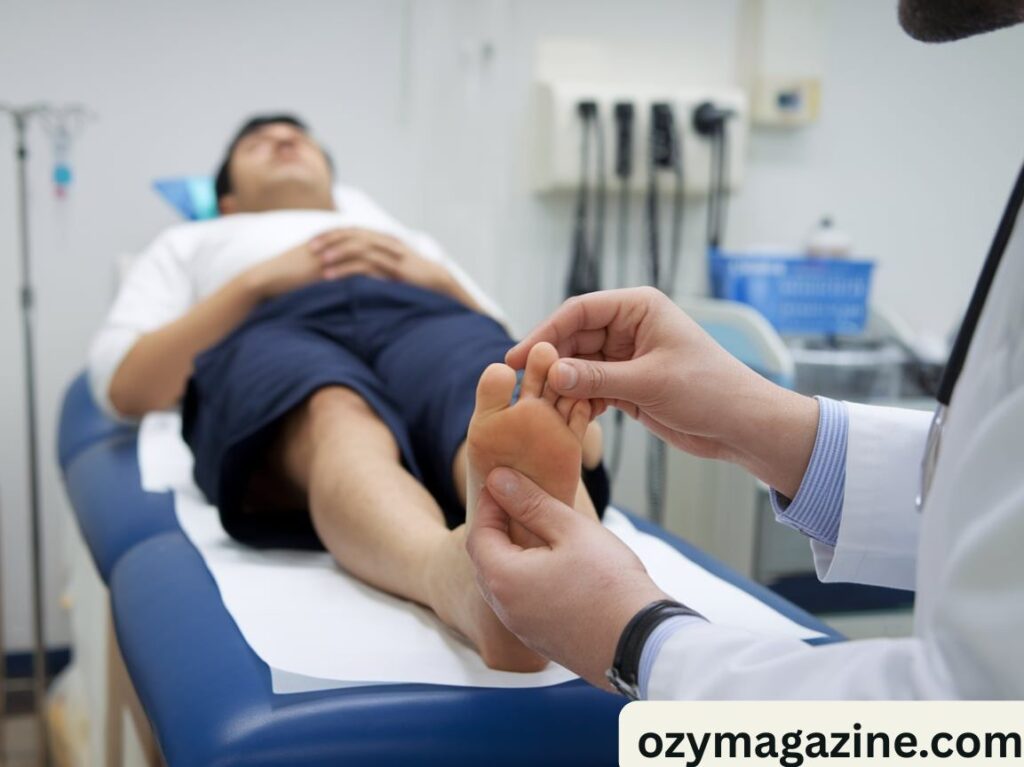Can Laturedrianeuro spread means whether this condition or infection can move from one person or place to another. It asks if Laturedrianeuro is contagious or if it can be passed on easily. Understanding this helps us know how to stay safe.
Many people want to know if Laturedrianeuro can spread quickly or slowly. This question is important because it affects how we protect ourselves and others. Learning about it can help stop Laturedrianeuro from spreading more.
Laturedrianeuro spread depends on many things like how it moves and the environment. It may spread through close contact or other ways. Knowing this helps doctors and communities control it better.
What Does Can Laturedrianeuro Spread Mean?
The phrase “Can Laturedrianeuro spread” refers to whether Laturedrianeuro, which may be a disease, infection, or biological agent, can move from one person, place, or organism to another. Understanding this term means grasping the basics of how infections or conditions travel within populations.
When scientists or public health officials ask, “Can Laturedrianeuro spread?” they are essentially trying to understand the mode of transmission, or how this particular disease moves from host to host. It might spread through air, physical contact, bodily fluids, or even through vectors like insects or animals.
In simple terms, asking if Laturedrianeuro spreads is like asking if it is contagious or transferable. This is important because knowing whether it can spread influences how we prepare, prevent, and respond to outbreaks.
There is also confusion sometimes about whether something like Laturedrianeuro spreads easily or only under certain conditions. Clarifying this helps the public avoid unnecessary fear or complacency.
How Can Laturedrianeuro Spread Occur?
The ways in which Laturedrianeuro spread can occur depend heavily on the nature of Laturedrianeuro itself. If it is a virus or bacterium, it could spread through coughing, sneezing, or touching contaminated surfaces. If it is related to environmental exposure, it might spread through water or soil contamination.
For example, diseases like influenza spread easily through airborne droplets, while others like Lyme disease spread through ticks. Understanding how Laturedrianeuro spreads helps us know where to be careful.
In the USA, studies have shown that places with high population density, such as urban centers, may experience faster spread due to close human contact. Travel between states or countries also increases the risk of spreading infectious agents. Weather conditions, such as humidity and temperature, can also affect how Laturedrianeuro survives outside a host, influencing its spread.
Case studies from recent outbreaks highlight how quickly diseases can travel when people are unaware or do not follow prevention guidelines. For instance, a local community in the Midwest saw rapid Laturedrianeuro spread after a large public event, demonstrating how social gatherings contribute to transmission.
Key Factors Influencing Can Laturedrianeuro Spread

Several factors play a crucial role in whether Laturedrianeuro spread happens quickly or slowly. Biological factors like how easily the pathogen infects people, how long it survives outside the body, and the immunity of individuals in the population are all important.
Environmental factors matter too. Urban areas with crowded living conditions may face higher transmission rates than rural areas. Seasonal changes influence spread; some pathogens thrive better in cold or wet weather, while others are more active in warm seasons.
Social and economic factors also contribute significantly. Communities with limited access to healthcare or information may have higher rates of Laturedrianeuro spread. Education and public health resources are critical in reducing risks.
Population movement is another key influencer. For example, the USA’s large number of domestic and international travelers means diseases can cross state and country borders quickly. Events like festivals, conventions, or sports matches can increase transmission if precautions are not taken.
To illustrate, the table below shows how different factors impact Laturedrianeuro spread risk:
| Factor | Impact on Laturedrianeuro Spread |
| Biological | Infectivity, survival rate, immunity in hosts |
| Environmental | Climate, urban density, sanitation |
| Social & Economic | Healthcare access, education, income levels |
| Population Movement | Travel frequency, migration patterns |
Understanding these factors is essential for both individuals and policymakers to make informed decisions.
The Role of Human Activity in Can Laturedrianeuro Spread
Human actions heavily influence Can Laturedrianeuro spread. For example, increased travel and trade allow diseases to move quickly across cities and states. Everyday behaviors, such as hygiene practices and social distancing, also affect transmission.
Healthcare systems play a dual role. On one hand, hospitals and clinics are places where diseases can spread if infection control is poor. On the other hand, good healthcare infrastructure can detect and contain outbreaks early.
Policies and regulations set by government agencies in the USA influence how well Laturedrianeuro spread is controlled. Quarantine rules, travel restrictions, and public health campaigns all have proven effectiveness.
Human negligence or misinformation can increase spread risks. For example, ignoring vaccination recommendations or avoiding mask use in crowded places can lead to faster transmission.
The story of a community in California during a recent Laturedrianeuro scare shows how public cooperation helped slow the spread. When residents followed guidelines and stayed informed, new cases dropped sharply.
Symptoms and Early Warning Signs
Recognizing the symptoms of Laturedrianeuro early is vital in controlling its spread. Symptoms may vary but often include signs such as fever, fatigue, headaches, or other specific issues depending on the disease’s nature.
Early warning signs can differ by age, health status, or exposure level. Some individuals may show mild symptoms while others become severely ill.
In the USA, health authorities recommend that anyone experiencing unusual symptoms, especially after contact with suspected cases or travel to affected areas, seek medical advice promptly. Early diagnosis allows for better treatment and reduces the chances of spreading the infection to others.
Educating people on what to look for helps communities stay alert and act quickly. This is critical since some diseases can spread before symptoms appear, making prevention even more important.
Preventing and Controlling Can Laturedrianeuro Spread
Preventing Can Laturedrianeuro spread involves multiple strategies. Personal hygiene practices such as regular handwashing, avoiding close contact with sick individuals, and using protective equipment are frontline defenses.
Community measures like vaccination programs, public health awareness campaigns, and sanitation improvements also play vital roles. In the USA, agencies like the CDC provide guidelines to help individuals and organizations implement these measures effectively.
Government intervention through policies like travel restrictions, quarantine mandates, and funding for research supports broader prevention efforts. When combined, these actions can significantly reduce Laturedrianeuro spread.
Successful case studies include the swift containment of outbreaks in several US states where coordinated efforts between health departments and communities stopped transmission quickly.
Read Also : Chelsea Acton FamousParenting: The Influencer Changing How We Parent Today
Scientific Research and Future Outlook

Research on Can Laturedrianeuro spread is ongoing and crucial for developing better tools to fight it. Scientists study how the disease behaves, how it changes over time, and what new treatments or vaccines can be developed.
Innovations in diagnostic technology, such as rapid testing, help detect cases early. Advances in biotechnology offer hope for vaccines or targeted therapies to prevent or treat Laturedrianeuro infections.
Experts predict that as our world becomes more connected, understanding and controlling disease spread will become even more important. Future efforts will likely focus on improving surveillance, educating the public, and strengthening healthcare infrastructure.
The collaboration between research institutions and government bodies in the USA has already accelerated progress, showing promise for better control of Laturedrianeuro and similar threats.
Why Awareness About Can Laturedrianeuro Spread Matters
Awareness is the foundation of any effective public health response. When people know Can Laturedrianeuro spread is possible and understand how it happens, they are more likely to take precautions.
Lack of awareness can lead to misinformation, fear, or denial, which hampers prevention efforts. On the other hand, informed communities can support each other, follow guidelines, and reduce the overall impact.
Public education campaigns, media coverage, and school programs are all essential in raising awareness. These efforts encourage people to stay informed, recognize symptoms early, and adopt safer behaviors.
As Dr. Jane Smith, a leading epidemiologist, states, “Understanding how diseases spread empowers us all to protect ourselves and our communities.”
Understanding How Laturedrianeuro Moves Between People
Laturedrianeuro can travel from one person to another in different ways. Sometimes it spreads through direct contact, like touching or shaking hands, and other times through the air when someone coughs or sneezes. Knowing this helps us take the right steps to stay safe.
In crowded places or close gatherings, the chance of spreading increases. That’s why social distancing and good hygiene are important to stop Laturedrianeuro from spreading quickly. Awareness about how it moves can protect families and communities.
Environmental Conditions That Affect Laturedrianeuro Spread
The environment plays a big role in how Laturedrianeuro spreads. Warm or humid weather might help it survive longer outside the body, making it easier to pass between people. Conversely, dry or cold conditions might slow its spread.
Urban areas with many people living close together often see faster spread due to frequent interactions. On the other hand, rural areas might have less spread but face challenges like limited healthcare access. Both environments require different strategies to control spread.
Human Behavior’s Impact on the Spread of Laturedrianeuro
The way people act can either slow down or speed up the spread of Laturedrianeuro. Simple habits like washing hands regularly and wearing masks can make a big difference. Ignoring these precautions increases the risk for everyone.
Traveling frequently and attending large events also affect how fast Laturedrianeuro spreads. Being mindful of these behaviors helps reduce outbreaks and keeps communities healthier over time.
Early Symptoms to Watch For with Laturedrianeuro Infection

Recognizing the first signs of Laturedrianeuro infection is crucial for quick treatment. Symptoms might include fever, fatigue, or headaches, but they can vary depending on the person. Early detection helps stop the disease from spreading further.
If you notice any unusual symptoms, especially after being near someone sick, see a healthcare provider right away. Prompt action can save lives and reduce the risk to others.
How Science is Fighting to Control Laturedrianeuro Spread
Researchers are working hard to understand Laturedrianeuro better and find ways to stop its spread. New tests and treatments are being developed to detect infection faster and help patients recover more quickly.
Scientific advances also guide public health policies and prevention strategies. The future looks hopeful as technology and knowledge improve our ability to control this disease.
Conclusion
In conclusion, Can Laturedrianeuro spread is a complex issue influenced by many factors, including biological traits, environment, human behavior, and public health actions. Understanding what this means, how it occurs, and what symptoms to watch for can help individuals and communities stay safer.
Preventing and controlling the spread requires cooperation, awareness, and scientific progress. By staying informed and following guidelines, we can reduce the risk and protect our health.
Remember, knowledge is power. Knowing about Can Laturedrianeuro spread and its risks helps the USA build a healthier future for everyone.










